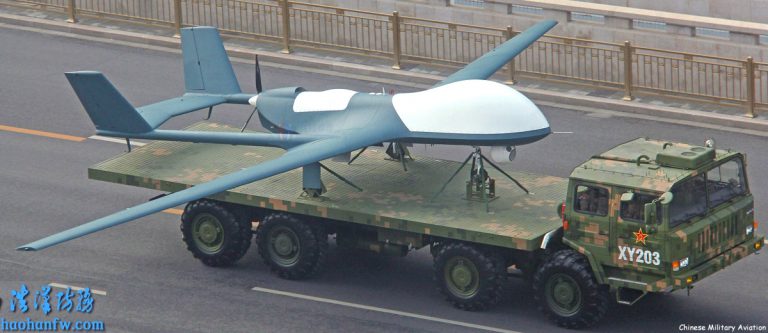China Deploys UAVs to Woody Island
In case you missed it, over the US Memorial Day weekend new satellite imagery was published showing some new developments on Woody Island, China’s important governing outpost for its claimed islands in the South China Sea. The space snapshots acquired during April by ImageSat International (ISI) show new drone deployments to the expanded island adding to the arsenal of J-11 fighters, HQ-9 surface-to-air missiles and YJ-62 anti-ship missiles.
The panchromatic imagery dated 12 April 2016 shows a single Harbin BZK-005 parked just outside the base’s aircraft hangars. This is the same drone we reported patrolling the East China Sea from China’s dedicated drone facility on Daishan Island in June 2015. The deployment in the South China Sea continues to support orders that would see the Asian giant deploy drones to monitor it’s perceived maritime territory.
Unfortunately, at this time we were unable to acquire a copy of the imagery to do an independent analysis. ISI did not break out any associated ground control equipment to suggest the UAV is operated from the airbase. However, it is believed that the drone is equipped with a satellite communications system allowing for real-time data transmission and control from extended ranges.
The BZK-005’s primary mission appears to be long-range intelligence, surveillance and reconnaissance. An armed version of the drone has not surfaced on satellite imagery or in handhelds. It is thought the unarmed drone can be equipped with diverse payloads including electro-optical, infrared, synthetic aperture radar, and signals intelligence sensors.

The drone was first reported in an Aviation Industry Corporation of China (AVIC) promotional video featured at the 2006 Airshow China in Zhuhai. The Beijing University of Aeronautics and Astronautics began developing the apparent naval drone as early as 2005 in conjunction with the Hongdu Aviation Industry Group. By late 2009, Internet photos showed the UAV on the tarmac at what has now been identified as Shahezhen.
According to analyst estimates, the UAV has a flight ceiling of 8,000 meters, a max range of 2,400 km and a maximum endurance of 40 hours. The drone made big headlines in 2013 when it flew close to the disputed Senkaku/Diaoyu Islands beyond the country’s exclusive economic zone. Japan scrambled F-15 fighters to intercept as a result.
While such UAVs won’t be sinking ships or hitting ground targets, its deployment continues to reify China’s intent to put unmanned eyes in the sky to monitor nearby territory it wants to control.



